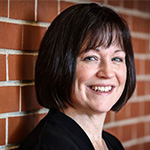SLP Categories: Recognized by Apraxia Kids for Advanced Training and Expertise in Childhood Apraxia of Speech and Apraxia Kids Speech-language Pathologist Directory Member
No Records Found
Sorry, no records were found. Please adjust your search criteria and try again.
Google Map Not Loaded
Sorry, unable to load Google Maps API.
- Patricia
- Mayro
- Yes
- 8380 Old York Road, Suite 2100
Elkins Park
Pennsylvania
19027
United States - Salus at Drexel University Speech-Language Institute

Elkins Park
Pennsylvania
19027
United States
I mostly use Integral Stimulation (look, listen, do), following Edythe Strand's DTTC, although I am aware of other evidence-based approaches, such as PROMPT and ReST. My treatment involves:-Teaching movement sequences vs isolated phonemes-Using multi-sensory input (auditory, visual, tactile) - Incorporating principles of motor learning in terms of distribution (mass vs. distributed), schedule (blocked vs. random practice), variability (variable vs. constant practice), and feedback (knowledge of results vs. knowledge of performance)- Being intentional about manipulating frequency and intensity of practice - Thinking about range of difficulty in targets and managing the challenge of targets to facilitate motor learning- Adjusting the level of cueing carefully -shaping the productions to accuracy in order to practice high quality productions repeatedly-using activities that allow for many productions-Including caregivers as much as possible.
Parents attend the sessions with their child. I encourage parents to be involved and enthusiastic. I ask parents to report on what happened at home between sessions and invite questions and feedback to problem-solve together. I also rely on parents to actively engage in signing or AAC use with the child (if alternative communication methods are used) and to help the child "report" on what he/she wants to tell me about life since we last met. Parents often can be great motivators and reinforcers during practice sessions.
I have introduced use of sign language for families who were open to learning signs and have used IPad-based AAC systems, such as ProLoquo2go with clients and families. I emphasize that the use of signs or AAC is a two-way street; the families should engage with the child in using the alternative communication method, rather than expecting only the child o use signs or AAC.




